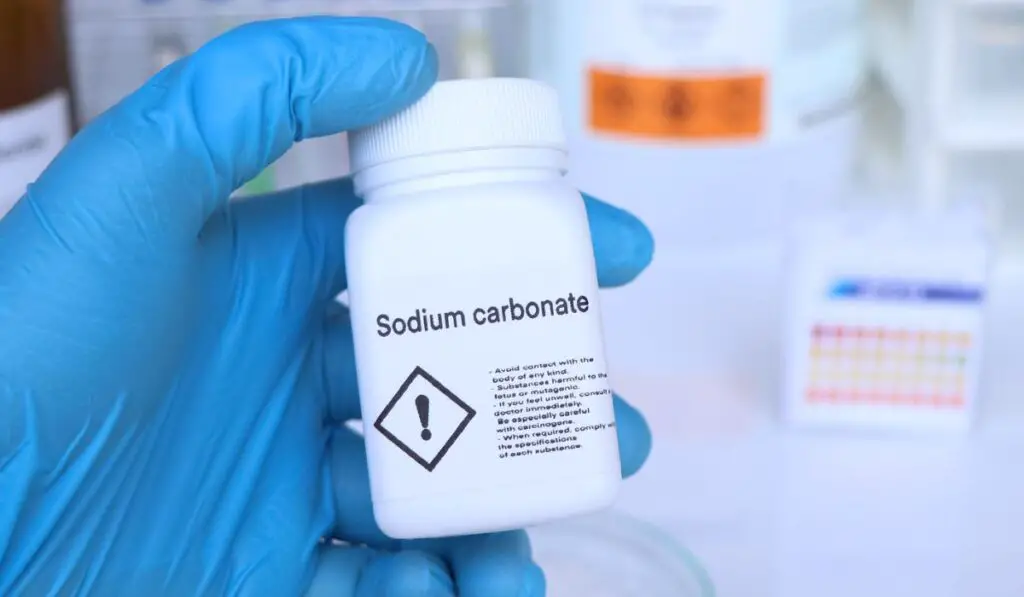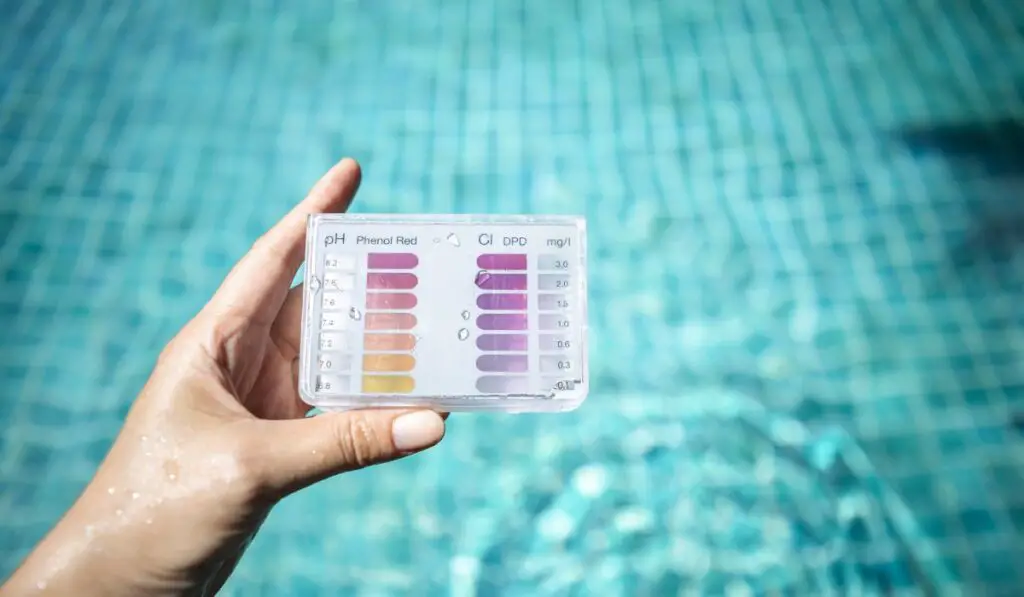Balancing the chemicals in a pool is a difficult job and there are so many chemicals to choose from. So what is soda ash and when should you use it?
Soda ash is a pool chemical that raises both pH and alkalinity. It should be used when both levels in your pool are low. If just the alkalinity is low, baking soda is a better option. When adding soda ash to your pool, it must be added little by little and diluted so it doesn’t cloud your pool.
Want to learn more about soda ash and what you can use it for? Let’s look at all the information there is to know about soda ash and when you should add it to your pool.
What is Soda Ash?

Soda ash is a chemical which is commonly used in pools. Soda ash is a nickname for the chemical which is actually sodium carbonate. It’s called soda ash because it was once extracted from plant ashes. Currently, soda ash is manufactured.
Soda ash has a high pH of 11.3-11.7 and it is often used by pool owners to raise pH and alkalinity levels when needed. Sometimes it can also be called a pH increaser.
What is the Purpose of Soda Ash in a Pool?
The main purpose of putting soda ash in your pool is to raise the pH level. Because soda ash is neither a base or an acid, adding it to your pool causes a chemical reaction which helps to balance the pH of the water.
It should also be noted that soda ash simultaneously increases the alkalinity of your pool. It is impossible to just increase one or the other using soda ash.
Why Would You Need to Raise the pH in Your Pool?
pH level is an important part of balancing the chemicals in your pool. Ideally your pool should be between 7.2 and 7.6. If your pool gets outside of this range, the chlorine becomes less effective which could make swimmers who use your pool sick.
At the beginning of the season, you likely spent a few hours balancing the chemicals in your pool. Of course, this isn’t permanent, and as more people use your pool it will throw off the pH and alkalinity.
Adding soda ash to your pool is a quick way to raise your pool’s pH and alkalinity when the levels get below what is optimum. Soda ash addresses both at once unlike other chemicals, like baking soda, which only adjust one and not the other.
So if you test your pool water to find both the pH and alkalinity low, this is a great reason to add soda ash to your pool.
Baking Soda vs Soda Ash: Which is Better?
Both soda ash and baking soda serve important functions when it comes to balancing the chemicals in your pool. Neither one is better than the other, but they both serve different purposes and should be used at different times.
Baking Soda
Baking soda, also known as sodium bicarbonate, is a chemical which is commonly used to raise pool alkalinity. The cool thing about baking soda is that it raises the alkalinity without raising the pH thanks to the carbon content which is different from that of soda ash.
So if you test your pool water and find that the pH is okay but the alkalinity is low, it’s a good idea to add some baking soda to your pool.
Soda Ash
As mentioned above, when you add soda ash to your pool, it will raise both the alkalinity and the pH. In recent years, pool owners have seemed to forget this fact. Many add copious amounts of baking soda to their pool with the hope of raising the pH. (For example you need 21 lbs of baking soda to raise pH 0.4)
Not only does this get costly very quickly, but it makes it very difficult for pool owners to adjust the pH just slightly, instead, leaving them to guess and check, which can take longer in the long run. Soda ash, on the other hand, just takes 12.2 ounces for the same 0.4 pH increase mentioned above.
The main reason pool owners have forgotten soda ash is because it does cloud the water just slightly if the alkalinity is not low when it is added. But when you realize it does the exact same job for a fraction of the cost, maybe water being slightly cloudy isn’t such a big deal(plus there are ways to remedy it!)
Either way, soda ash and baking soda are both good chemicals to use to balance out your pool water, they are just used in very different situations. Therefore the one which is better for your pool will depend on your water readings and how much you need to add. We recommend any pool owner keep both on hand to handle any situation.
Can Soda Ash Make Your Pool Cloudy?
Soda ash can make your pool cloudy, but it depends on the other chemicals in your pool and how much you add. Pool water clouds when the alkalinity rises above 120 ppm.
Remember, if your alkalinity and pH are low, adding soda ash will likely not cloud your pool. Instead it will bring both to safe levels. Additionally, if you take the opportunity to dilute your soda ash before adding it to your pool, this reduces the chances your pool will end up cloudy.
If your pool does end up cloudy, you can take measures to reduce the alkalinity and the cloudiness will dissipate. The best way to clear cloudiness is by adding calcium chloride to your pool. This will reduce the alkalinity without reducing the pH.
How to Add Soda Ash to Your Pool

One of the main reasons soda ash can cloud your pool is because it is added incorrectly. Below we’ve added the correct procedure for adding soda ash to your pool.
Step 1: Test the Water
Start by testing your water. Soda ash is ideal when both the pH and the alkalinity are low. If you find that to be the case, then proceed.
Step 2: Calculate the Amount
Soda ash will raise your pH level 0.2 for each 6 ounces added to 10,000 gallons of water. So if your pool is 20,000 gallons and you need to raise the pH 0.4, then add 24 ounces.
Step 3: Divide the Soda Ash
Soda ash clouds your pool when too much is added at once. When you need to add more than 16 ounces, it is recommended to divide the soda ash to add into 16 ounce increments.
Step 4: Get Pool Water
Dip a 5 gallon bucket in your pool and fill it halfway. Then add your 16 ounces of soda ash. Use a wooden stick to stir.
Step 5: Pour in Pool
After the soda ash is dissolved, you can add the water in the bucket back to the pool. We recommend adding it little by little as you walk around the pool to dilute it. Do not pour it in front of the filter.
Step 6: Wait
Wait for 6 hours before adding more soda ash. Then repeat steps 4 and 5.
Step 7: Retest
After adding all the soda ash in 16 ounce increments, wait 6 hours before retesting the water. If you are happy with the results, it’s time to swim! Else use more soda ash or baking soda to adjust pH and alkalinity levels.
